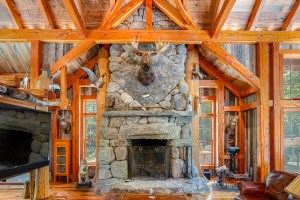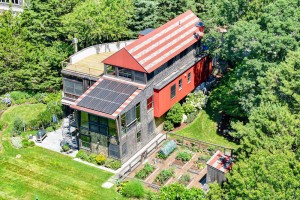This New Interactive Map Settles Boston’s Muddled Neighborhood Boundaries
Real estate analytics firm NeighborhoodX sliced up the city into clearly defined borders.

Map via NeighborhoodX / CLICK TO VIEW LARGER
If you’ve ever gotten into a tiff with a guy at the bar over the line that divides Allston and Brighton, well, first, congratulations, you’re a true Bostonian. Second, prepare to be proven wrong—or right, depending on your perspective.
Real estate analytics firm NeighborhoodX has created a map that settles Boston’s muddled neighborhood boundaries. By culling data from scores of historical maps, current zoning maps, and other resources, NeighborhoodX’s director of research, Constantine Valhouli, sliced up the city’s neighborhoods within clearly defined borders.
“[Boundaries are] one of the big Boston barroom detates,” Valhouli says. “We either are going to put fuel on the fire and resolve these debates or we’re going to have people brawling about whether they happen to be in Southie or Dorchester.”
Valhouli pored over zoning maps, planning maps, topographical maps, and historical ones—including some maps created by Frederick Law Olmsted. In addition to piecing together the annexation of Boston over the years, Valhouli chatted with professionals, like real estate brokers and planners, as well as locals.
“Because sometimes, the east side of the street is not Uphams Corner. That’s Jones Hill,” Valhouli says. “I would actually choose a grandmother who’s grown up in a neighborhood over an algorithm any day.”
Valhouli, a longtime player in Boston’s real estate market, decided to create the ultimate guide to the city’s neighborhoods after seeing real estate agents fudge neighborhood boundaries time and time again. He says that some agents list homes in more desirable, adjacent neighborhoods to justify higher asking prices. (This could mean listing a home near the South End/Roxbury border in the South End, when it’s technically in Roxbury, for example.)
Plus, real estate portals like Redfin, Trulia, and Zillow all feature maps that divide Boston’s neighborhoods into funky shapes—and each site defines them differently. So the grey areas that are so fun to debate can actually help agents land a more lucrative sale.
It’s not just a question of real estate, either. A neighborhood’s boundaries differ depending on who and what you consult. Their definitions change over time, and residents, city planners, and business owners all draw borders differently. That’s why, Valhouli explains, his map was so important to create.
The multi-layered map works like this: Users type an address into the search bar at the top and it drops a pin on the map, offering a definitive answer about the pin’s neighborhood. They can zoom in and out to inspect borders more closely, or click around to see the names of nearby neighborhoods. Users can also toggle on more map layers, like Historic District boundaries and Boston zoning boundaries, or overlay the T map onto it.
There are extra layers that stem from Valhouli’s curiousity, too. He created one that shows all of the Whole Foods locations in the city (“It’s the single-best prophecy for so much,” like property values and demographics, he says) as well as one with airplane noise complaints, and another that shows the risks if a liquid natural gas fire were to ever occur in Boston Harbor. But that’s all supplementary to the map’s main goal: to answer the question “Where is my property, actually?”
And even after years of researching Boston’s neighborhood boundaries, Valhouli knows the barroom debates will never truly come to an end.
“[The map] is definitely not intended to be the end all and be all. If anything, we welcome the criticism, we welcome the feedback,” he says. “It’s a living document. It’s going to change and evolve because neighborhoods change and evolve.”
See the map for yourself here—and then, maybe, pick a fight.


